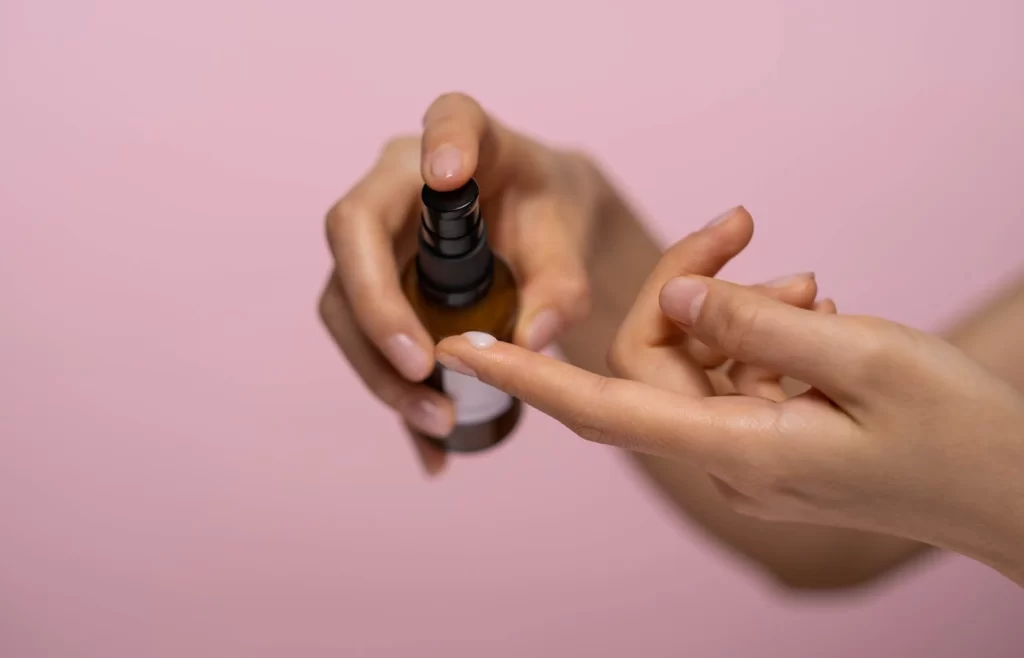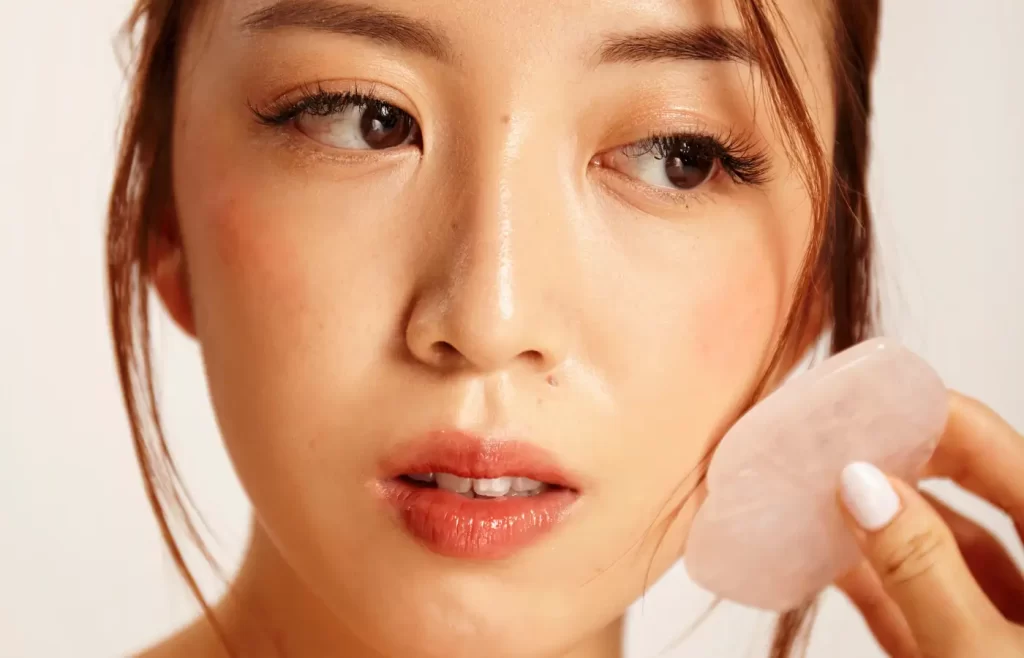
How to Build an Effective Skincare Routine for Hyperpigmentation
If you’re struggling with dark spots, uneven skin tone, or discoloration, establishing a targeted skincare routine for hyperpigmentation can be a game-changer. Hyperpigmentation is a common concern that affects people of all skin types and can be caused by factors like sun exposure, acne scars, or inflammation. With the right products and a consistent routine, you can fade these spots and work toward a brighter, more even complexion.
As someone who’s personally dealt with hyperpigmentation, I understand how challenging it can be. Over time, I developed a skincare routine that’s truly helped me see results, focusing on gentle yet effective ingredients to reduce discoloration and brighten my skin. I’m excited to share my routine and tips, so you can create a plan that works for you and see your complexion become clearer and more radiant.
Related: The Best Skincare Products For Hyperpigmentation
What is Hyperpigmentation?
Hyperpigmentation is a condition where certain areas of the skin become darker than the surrounding skin. This darkening occurs due to an excess of melanin, the pigment responsible for skin color. Common types of hyperpigmentation include sunspots, melasma, and post-inflammatory hyperpigmentation, which often results from acne or skin injuries. While it’s generally harmless, hyperpigmentation can be stubborn and slow to fade without the right skincare approach. By understanding what causes hyperpigmentation, you can choose ingredients and products that effectively address this concern in your daily routine.
What is the Fastest Way to Cure Hyperpigmentation?
The fastest way to reduce hyperpigmentation involves a combination of targeted treatments, daily sun protection, and sometimes in-office procedures overseen by a dermatologist. While there’s no overnight solution, consistent use of effective ingredients and the right treatments can speed up results. Here are some approaches to consider for faster results:
- Prescription Ingredients (e.g., Hydroquinone): Prescription-strength hydroquinone is one of the most powerful treatments for hyperpigmentation. It blocks melanin production, fading dark spots more effectively than most over-the-counter products. Dermatologists may also prescribe retinoids or combine hydroquinone with other ingredients for a faster effect.
- Chemical Peels: A series of chemical peels with ingredients like glycolic acid, lactic acid, or trichloroacetic acid (TCA) can speed up cell turnover and help fade pigmentation. Peels should be done under professional supervision for best results and to minimize the risk of irritation.
- Laser Treatments: Dermatologists may use laser treatments, such as Q-switched lasers or IPL (Intense Pulsed Light), to target pigmentation. These treatments break down pigment in the skin and can show results faster than topical products alone, though they may require multiple sessions.
- Daily Sunscreen Use: Sunscreen is crucial for preventing further darkening and supporting faster fading of existing spots. A broad-spectrum SPF 30+ blocks UVA and UVB rays, which can worsen hyperpigmentation. Tinted sunscreens are especially beneficial, as they can also protect against visible light, which may contribute to hyperpigmentation.
- Topical Brightening Ingredients: Daily application of serums with vitamin C, niacinamide, and alpha arbutin can complement other treatments by brightening skin over time. When used consistently, these ingredients support faster, more noticeable fading.
While these methods can help, it’s important to be patient and avoid over-treating, as aggressive approaches may lead to irritation or worsening pigmentation. Consult with a dermatologist to develop a treatment plan that suits your skin type and the severity of your hyperpigmentation for the safest and most effective results.
Skincare Routine for Hyperpigmentation
Building an effective skincare routine for hyperpigmentation involves choosing products that target dark spots, encourage cell turnover, and protect the skin. Here’s a step-by-step guide to help you achieve a brighter, more even complexion.
Step 1: Cleanser
Begin with a gentle, non-drying cleanser to remove impurities while keeping your skin’s natural moisture intact. A well-formulated cleanser prepares your skin for the active ingredients in the rest of your routine without causing irritation, which can make hyperpigmentation worse.
Step 2: Exfoliation
Exfoliation helps remove dead skin cells, which can improve the effectiveness of your other products. Look for chemical exfoliants, like AHAs (such as glycolic acid or lactic acid) or BHAs (such as salicylic acid), that promote cell turnover and help reveal fresh, even skin. Limit exfoliation to 1-3 times per week, depending on your skin’s sensitivity.
Step 3: Targeted Serums

Serums are essential for addressing hyperpigmentation, delivering high concentrations of brightening ingredients to fade dark spots. Key ingredients to look for include:
- Vitamin C: Brightens skin and fights free radical damage.
- Niacinamide: Reduces inflammation and helps lighten dark spots.
- Tranexamic Acid: Effective against stubborn pigmentation, like melasma.
- Alpha Arbutin: Inhibits melanin production to even out skin tone.
- Azelaic Acid: Helps lighten dark spots, reduce redness, and is particularly effective for acne scars.
Use your chosen serum daily, and adjust the frequency based on your skin’s tolerance.
Step 4: Moisturizer
Hydration is essential to support your skin’s barrier and to improve the effectiveness of treatments. Look for a lightweight, non-comedogenic moisturizer with hydrating ingredients like hyaluronic acid or ceramides to keep skin balanced and calm.
Step 5: Tinted Sunscreen (SPF 30+ Daily)
Tinted sunscreen is a must-have in any routine targeting hyperpigmentation. Daily SPF not only prevents existing dark spots from getting worse but also protects against new pigmentation. Tinted sunscreens offer additional benefits, as the iron oxides in the tint help block visible light, which can contribute to hyperpigmentation, especially in those with medium to deeper skin tones.
Choose a broad-spectrum SPF 30+ tinted sunscreen with a lightweight, blendable formula that’s comfortable for everyday use. Reapply as needed throughout the day if you’re exposed to sunlight to keep your skin protected and support a more even skin tone.
Optional: Prescription Treatments (Hydroquinone and Tretinoin)
For my own stubborn hyperpigmentation, I’m currently using a dermatologist-prescribed combination of hydroquinone and tretinoin. Hydroquinone works by inhibiting melanin production, which directly targets and lightens dark spots. Tretinoin, a powerful retinoid, promotes faster cell turnover, gradually fading pigmentation and helping to reveal clearer, more even skin over time. These treatments are highly effective, but because they can increase sensitivity to sunlight, I’m careful to follow my dermatologist’s instructions closely and always use a broad-spectrum sunscreen daily to protect my skin. This combination has been a key part of my routine for seeing real progress with hyperpigmentation.
By following these steps, you’ll be on track to minimize hyperpigmentation and enjoy a brighter, more even complexion over time. Remember to stay consistent, and be patient, as noticeable results may take several weeks to months.
Achieving a clearer, more even complexion takes patience and consistency, but with the right skincare routine for hyperpigmentation, you can make significant progress in fading dark spots and discoloration. By incorporating products with proven ingredients—like vitamin C, niacinamide, tranexamic acid, and hydroquinone—and protecting your skin daily with sunscreen, you’re setting yourself up for success. Remember, it’s important to listen to your skin, introduce new products gradually, and consult a dermatologist if needed. With time, this targeted approach can help you see brighter, more radiant skin.



